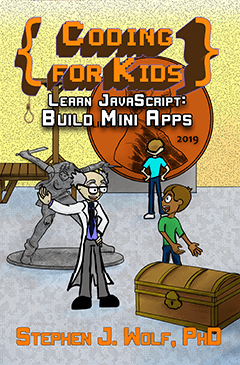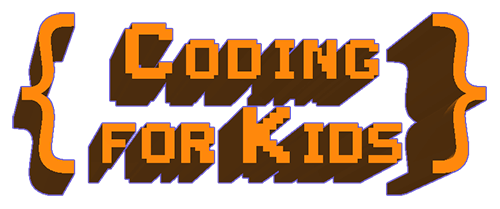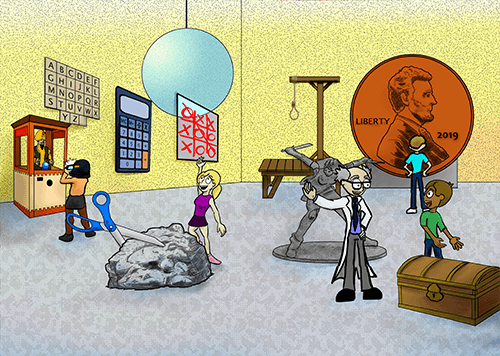Now Available!
About Coding for Kids: Learn JavaScript: Build Mini Apps
Learn JavaScript
JavaScript is the brains behind the internet, updating websites, running games, and so much more. This book teaches you the basics of coding in JavaScript by creating over a dozen Mini Apps.
The Mini App Plan
Learn about proper syntax, variables, and strings. Add to your skills with conditionals and loops, then explore arrays, objects, and functions.
Later, we incorporate HTML and CSS to connect to JavaScript's inherent strength of working with webpages.
Share your creations with friends and family!
This Book
The focus is to teach you standard coding concepts that stretch to any programming language. Even if you switch to another language later, the lessons you learn here will benefit you.
In order to code, you only need simple text files. To test your code, you need access to an internet browser, but you don't need internet access. Chapter 1 covers the setup you need to get started.
This book is written by a middle school science teacher with over 18 years of experience working with kids. The format of the book is a step-by-step guide through the process with repetition, and contains all the code at the end of each section. A short JavaScript reference guide is also included, as well as an exclusive website.
Start Coding JavaScript Today!
Chapter Breakdown
- Chapter 1 introduces you to the book and gets you set up and ready to code.
- Chapter 2 starts you coding in the console.
- Chapter 3 helps you write your first app, a Word Replacement Game.
- Chapter 4 teaches conditionals through the Test Averager.
- Chapter 5 sets up random numbers through our Fortune Teller.
- Chapter 6 works with while loops in Guess My Number.
- Chapter 7 expands into for loops in Rock, Paper, Scissors.
- Chapter 8 utilizes arrays with a Random Word Generator.
- Chapter 9 incorporates array and string methods with a round of Hangman.
- Chapter 10 demonstrates the use of objects with The Quizzer.
- Chapter 11 prepares you with functions in Math Helpers.
- Chapter 12 ties in our coding concepts with Treasure Quest.
- Chapter 13 breaks out of JavaScript to introduce HTML.
- Chapter 14 uses our HTML skills in the Tip Calculator.
- Chapter 15 freshens up our Math Helpers.
- Chapter 16 dives into styling with CSS.
- Chapter 17 ties HTML and CSS together for 23 Pennies.
- Chapter 18 enacts some AI with Tic-Tac-Toe.
- Chapter 19 increases the interactivity with Bubble Pop.
- Chapter 20 pits your skills against monsters in Battles in Kallisor.
- Chapter 21 challenges you to take the next steps in your coding adventure.
- Chapter 22 is a condensed JavaScript crash course and a quick reference syntax guide, helpful for all your future coding needs.
Purchase Coding for Kids on Amazon.com
Learn to code in JavaScript by building fifteen unique apps. When you purchase a print copy, you get access to the Kindle version for free.

Excerpt
Code block. A code block is a section of code that is clumped together. Loops, conditionals, and functions are all followed by a code block. You can identify them by a set of curly braces. There’s an open brace {, then code, and the closing brace }.
function testFunction()
{
//code block
}
No spaces in names. One thing that’s very important but easily forgotten when you’re starting out: when you name things, you can’t use spaces.
Did you see the variable name, whatsUp? There’s no apostrophe and there’s no space. It’s important to get this right.

CamelCase. Because we can’t use spaces, some names become hard to read, like some hashtags. To link words together for a variable or function name, keep everything lowercase, but capitalize the first letter of each new word and stick them together without spaces.
No good |
Good |
| first rule of coding, no spaces | firstRuleOfCodingNoSpaces |
| #no, @punctuation! | noPunctuation |
| Only _ and $ are ok | Only_And$AreOk |
| Yay numbers 23 | yayNumbers23 |
| 12 no numbers at start | no12NumbersAtStart |









